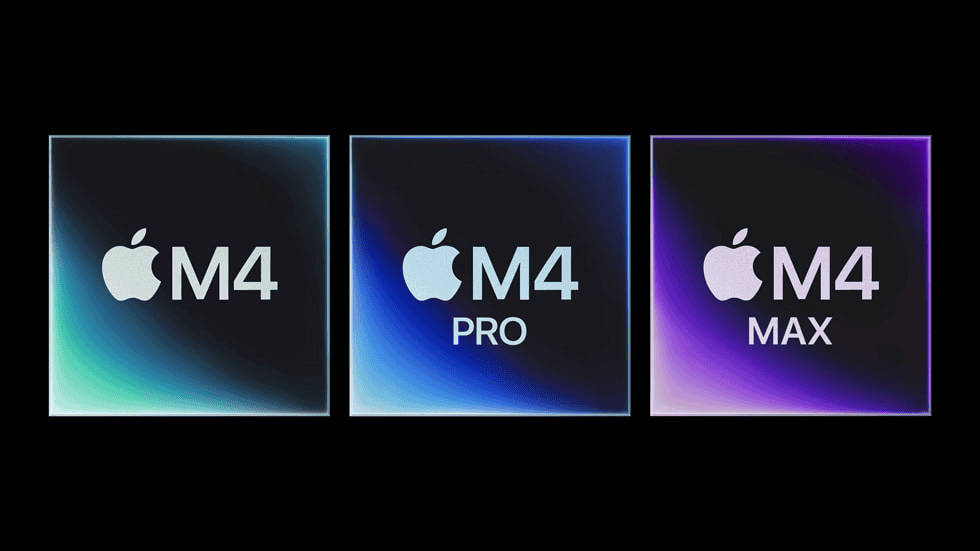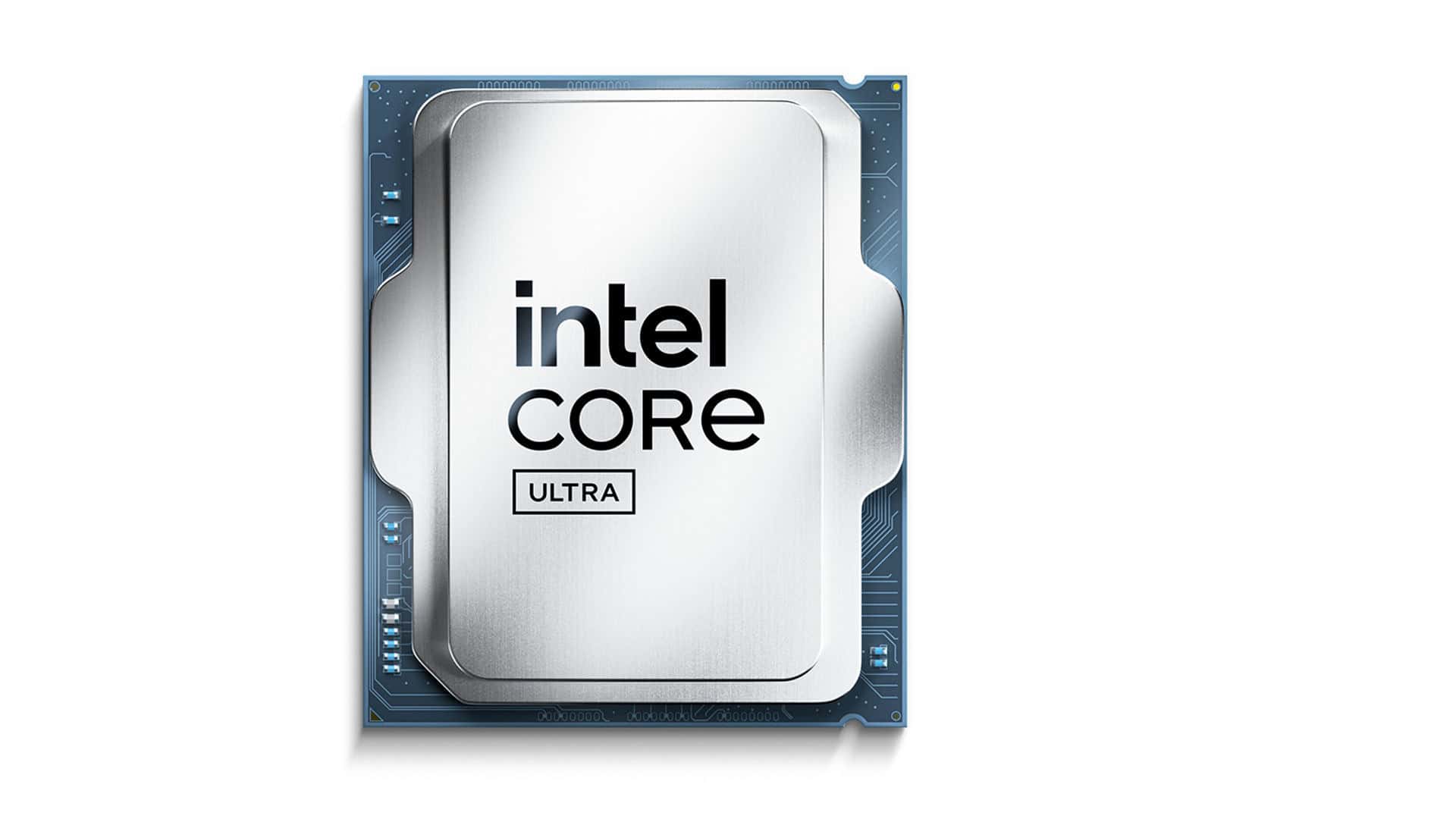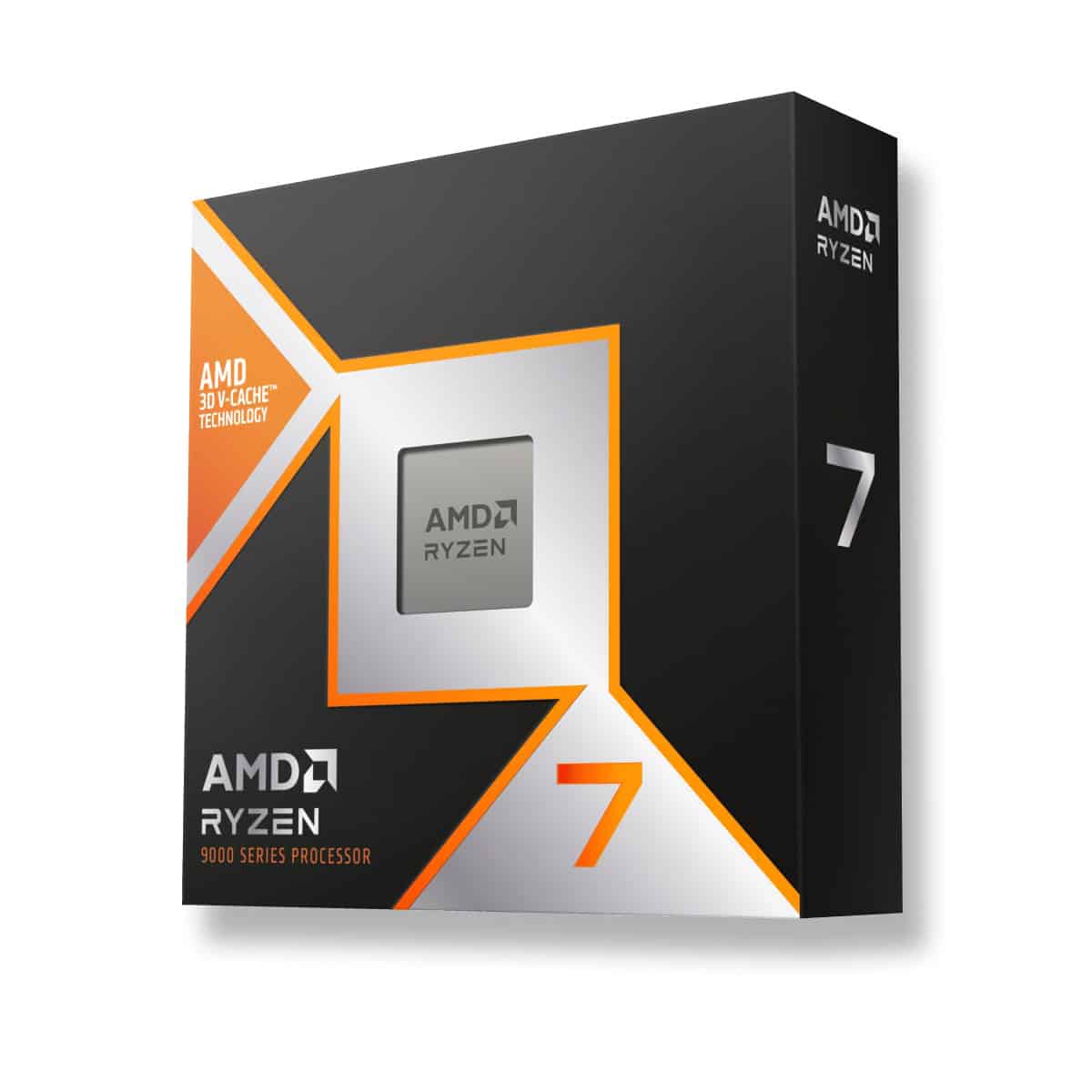The battle for CPU supremacy has intensified with Apple’s M4, Intel’s 15th generation, and AMD’s 9000 series processors. These cutting-edge chips offer impressive performance gains, pushing the boundaries of computing power.
Apple’s M4 has made waves in the tech world with its remarkable single-core performance. Benchmark results show the M4 outperforming Intel’s Core i9-14900K by approximately 15% in single-core tasks. This leap in performance positions Apple at the forefront of CPU technology, challenging the dominance of traditional x86 processors.
Intel and AMD are not standing still. The 15th generation Intel CPUs and AMD’s 9000 series bring significant improvements to the table. These processors boast increased core counts and enhanced clock speeds, catering to demanding tasks like content creation and gaming. The competition among these tech giants drives innovation, resulting in faster, more efficient computers for users across various applications.
The CPU Battle Heats Up
The competition between Apple, Intel, and AMD continues to intensify as each company releases its next generation of CPUs. Apple’s M4 chip builds on the success of its predecessors, offering impressive performance and power efficiency. Intel’s 15th Gen processors aim to reclaim the performance crown with new hybrid architectures and advanced features. AMD’s 9000 series CPUs bring high core counts and competitive pricing to the table. This three-way battle presents consumers with a wide range of choices for their computing needs, from laptops to high-performance desktops. Understanding the strengths and weaknesses of each CPU line is crucial for making informed purchasing decisions.
Apple M4

Apple’s M4 chip is the latest iteration of its ARM-based processor designed for Macs. It focuses on power efficiency and performance. The M4 comes in various configurations, offering up to 16 CPU cores and 40 GPU cores. It boasts improved performance compared to the M3, particularly in graphics-intensive tasks.
Pros:
- Excellent power efficiency, leading to longer battery life in laptops.
- Strong performance, especially in single-threaded applications.
- Integrated graphics that can handle demanding tasks.
Cons:
- Limited compatibility with Windows and other operating systems.
- Not as widely available as Intel and AMD CPUs.
Intel 15th Gen

Intel’s 15th Gen processors, codenamed “Arrow Lake,” feature a new hybrid architecture that combines performance cores (P-cores) and efficiency cores (E-cores). This design aims to provide a balance of power and performance. The lineup includes CPUs with varying core counts and clock speeds to cater to different needs.
Pros:
- Wide compatibility with existing and new motherboards.
- Strong multi-core performance for demanding tasks.
- Support for the latest technologies like PCIe 5.0 and DDR5 memory.
Cons:
- Higher power consumption compared to Apple’s M4.
- Can generate more heat, requiring robust cooling solutions.
AMD 9000 Series

AMD’s 9000 series CPUs, based on the Zen 5 architecture, continue to offer high core counts and competitive pricing. These processors are suitable for tasks like gaming, content creation, and multitasking. AMD also offers 3D V-Cache models with increased L3 cache for improved performance in certain applications.
Pros:
- High core counts for excellent multi-core performance.
- Competitive pricing compared to Intel.
- Support for PCIe 5.0 and DDR5 memory.
Cons:
- Power consumption can be high, especially for top-tier models.
- Single-core performance might not match Intel or Apple’s best.
Choosing the Right CPU
The best CPU for you depends on your specific needs and budget.
- Apple M4: Ideal for macOS users who prioritize power efficiency and performance in everyday tasks.
- Intel 15th Gen: A good choice for Windows users who need high performance for demanding applications and gaming.
- AMD 9000 Series: Suitable for users who value multi-core performance and competitive pricing.
Consider factors like your operating system, the types of applications you use, and your budget when making your decision.
| Feature | Apple M4 | Intel 15th Gen | AMD 9000 Series |
|---|---|---|---|
| Architecture | ARM | x86 Hybrid | x86 |
| Core Counts | Up to 16 | Up to 24 | Up to 16 |
| Power Efficiency | Excellent | Good | Good |
| Single-Core Performance | Excellent | Excellent | Good |
| Multi-Core Performance | Good | Excellent | Excellent |
| Integrated Graphics | Excellent | Good | Varies |
| Compatibility | macOS | Windows, Linux | Windows, Linux |
| Price | Premium | Premium | Competitive |
Understanding CPU Terminology
When comparing CPUs, you’ll encounter various technical terms. Here are some key terms to know:
- Cores: The processing units within a CPU. More cores generally mean better performance, especially in multitasking.
- Clock Speed: The speed at which a CPU operates, measured in gigahertz (GHz). Higher clock speeds usually mean faster processing.
- Cache: A small amount of high-speed memory that stores frequently accessed data. Larger cache sizes can improve performance.
- TDP (Thermal Design Power): A measure of the maximum amount of heat a CPU generates, expressed in watts. Higher TDPs require better cooling solutions.
- Architecture: The underlying design of a CPU. Different architectures have different strengths and weaknesses.
Is the M4 Max Truly a Performance King?
Recent Geekbench scores for Apple’s M4 Max have sparked a heated debate: can this laptop chip really outperform top-tier desktop CPUs from Intel and AMD? While the M4 Max’s impressive Geekbench numbers – over 4,000 single-core and 22,000 multi-core – suggest a dominant force, the reality is more nuanced.
Geekbench Isn’t Everything
Geekbench, while a popular benchmark, is just one piece of the puzzle. It’s known to favor Apple silicon and doesn’t fully represent real-world performance across diverse workloads. Other benchmarks, like Cinebench, paint a different picture, with high-clocked desktop CPUs like the Ryzen 9 9950X and Core i9-13900KS taking a clear lead, especially in multi-core performance.
Apple’s Efficiency Advantage
Apple’s M-series chips shine in terms of efficiency. They deliver impressive performance at lower clock speeds, maximizing battery life without sacrificing speed for everyday tasks. This efficiency stems from a combination of factors:
- ARM Architecture: The ARM architecture inherently favors power efficiency, allowing Apple to extract more performance per watt.
- Advanced Node: Apple leverages TSMC’s cutting-edge N3E node, which offers superior efficiency compared to the nodes used by AMD and Intel.
- System Optimization: macOS is tightly integrated with the M-series chips, further enhancing efficiency and performance.
Real-World Performance
For typical laptop workloads like programming, compiling code, and video editing, the M4 Max is a formidable contender. Its single-core performance is exceptional, rivaling even the best desktop CPUs. However, for heavily multi-threaded tasks and specialized applications, high-core-count desktop CPUs with higher power limits still hold an edge.
The Verdict
The M4 Max is undoubtedly a powerful and efficient chip, pushing the boundaries of laptop performance. While it may not be the absolute “king” across all benchmarks and workloads, it excels in its target domain, offering a compelling blend of performance, efficiency, and portability.
Ultimately, the “best” CPU depends on your specific needs and use cases. If you prioritize efficiency, battery life, and performance for everyday tasks, the M4 Max is a top contender. If you require maximum multi-core performance for demanding workloads, desktop CPUs still reign supreme.
Key Takeaways
- Apple’s M4 chip delivers superior single-core performance compared to Intel and AMD offerings
- Intel and AMD continue to innovate with increased core counts and clock speeds
- Competition in the CPU market benefits consumers with faster and more efficient computers
Comparative Analysis of CPU Architectures and Performance Metrics
The latest CPU offerings from Apple, Intel, and AMD showcase significant advancements in architecture, performance, and efficiency. These innovations drive competition and push the boundaries of computing capabilities across various devices and applications.
Core Specifications and Technological Innovations
Apple’s M4 chip features a 10-core CPU and a 16-core Neural Engine. This design emphasizes AI performance with 38 TOPS (Trillion Operations Per Second) capability. The M4 utilizes dynamic caching to optimize resource allocation.
Intel’s 15th generation processors, like the Core i9-14900K and 14900KS, boast up to 24 cores. These CPUs leverage Intel’s hybrid architecture, combining performance and efficiency cores.
AMD’s 9000 series CPUs offer high core counts and clock speeds. They use AMD’s latest Zen 4 architecture, which improves IPC (Instructions Per Clock) and energy efficiency.
Performance Benchmarks and Efficiency
Apple M4 chips excel in single-core performance, with reported Geekbench 6 scores reaching 3,800. This surpasses many desktop CPUs in single-threaded tasks.
Intel’s i9-14900KS achieves high clock speeds up to 6.0 GHz, leading to strong multi-core performance in benchmarks like Cinebench 2024.
AMD’s top 9000 series processors compete closely with Intel in multi-threaded workloads. They often provide better performance-per-watt ratios.
| CPU | Single-Core Score | Multi-Core Score | TDP |
|---|---|---|---|
| Apple M4 | ~3,800 | TBA | TBA |
| Intel i9-14900KS | ~2,300 | ~20,000 | 150W |
| AMD Ryzen 9 7950X | ~2,200 | ~19,000 | 170W |
Graphics, Gaming, and Multimedia Capabilities
Apple M4 includes a 10-core GPU with hardware-accelerated ray tracing. It supports AV1 hardware acceleration for efficient video processing.
Intel’s 15th gen CPUs feature integrated graphics with DirectX 12 Ultimate support. Dedicated versions offer improved gaming performance.
AMD’s 9000 series processors come with RDNA 3 integrated graphics, providing competitive performance for casual gaming and multimedia tasks.
Connectivity and Expansion
Apple M4 supports high-bandwidth unified memory, enhancing data transfer between CPU and GPU. It’s compatible with Thunderbolt 4 for fast external connectivity.
Intel’s latest CPUs support PCIe 5.0, enabling faster data transfer with compatible SSDs and GPUs. They also feature Thunderbolt 4 compatibility.
AMD processors offer PCIe 5.0 support and work with fast DDR5 memory. They lack integrated Thunderbolt support but can use USB4 for high-speed connections.
FAQs
Is AMD better than Apple?
It’s not a simple “better” or “worse” situation when comparing AMD and Apple CPUs. They have different strengths and weaknesses. AMD excels in raw multi-core performance, often offering more cores and higher clock speeds, especially in their desktop CPUs. This makes them a strong choice for demanding tasks like gaming and professional content creation. Apple, on the other hand, prioritizes efficiency and performance-per-watt with their M-series chips. This results in longer battery life and cooler operation, making them ideal for laptops and everyday tasks. Ultimately, the “better” choice depends on your specific needs and priorities.
Which CPU is better, AMD or Intel?
The AMD vs. Intel debate has raged for years, and the answer still depends on your needs and budget. In recent years, AMD has made significant strides, often offering competitive performance at a lower price point. Their Ryzen CPUs often excel in multi-core performance, making them popular for tasks like gaming and content creation. Intel, however, still holds a strong position in single-core performance, which can be important for certain applications and gaming scenarios. Consider your specific needs and budget to determine which brand offers the best value and performance for you.
Does Apple use Intel or AMD?
Apple used to rely on Intel CPUs for their Mac computers, but in 2020 they began transitioning to their own custom-designed ARM-based chips, known as the M-series. These chips, like the M1, M2, and M4, are designed specifically for Apple’s ecosystem and offer a unique blend of performance and efficiency. Apple no longer uses Intel or AMD CPUs in their current Mac lineup.
Why is Intel losing to AMD?
Intel has faced stiff competition from AMD in recent years due to several factors:
- AMD’s Architectural Advancements: AMD’s Zen architecture has proven to be highly competitive, offering significant performance improvements with each generation.
- Manufacturing Process: AMD has leveraged TSMC’s advanced manufacturing processes, giving them an edge in performance and efficiency.
- Competitive Pricing: AMD has often undercut Intel on price, offering compelling value for consumers.
- Focus on Specific Markets: AMD has strategically targeted key markets like gaming and high-performance computing, gaining significant market share.
While Intel still holds a strong position in the market, these factors have contributed to AMD’s resurgence and competitive advantage.
Is Intel becoming obsolete?
It’s premature to say that Intel is becoming obsolete. They remain a major player in the CPU market and continue to innovate. However, they face significant challenges from AMD and Apple, who have both made significant strides in performance and efficiency. Intel is investing heavily in new technologies and manufacturing processes to regain its competitive edge. The CPU landscape is dynamic, and Intel’s future success will depend on its ability to adapt and deliver compelling products.
Why do people prefer AMD over Intel?
Several reasons contribute to AMD’s growing popularity:
- Performance: AMD’s Ryzen CPUs often offer competitive or superior performance compared to Intel, especially in multi-core tasks.
- Value: AMD CPUs often come at a lower price point than comparable Intel CPUs, offering better value for consumers.
- Innovation: AMD has been pushing the boundaries with innovative technologies like their 3D V-Cache, which significantly boosts gaming performance.
- Platform Features: AMD platforms often offer more features, such as PCIe 4.0 support and overclocking capabilities, appealing to enthusiasts and gamers.
These factors have helped AMD gain favor among consumers and enthusiasts seeking high performance and value.







